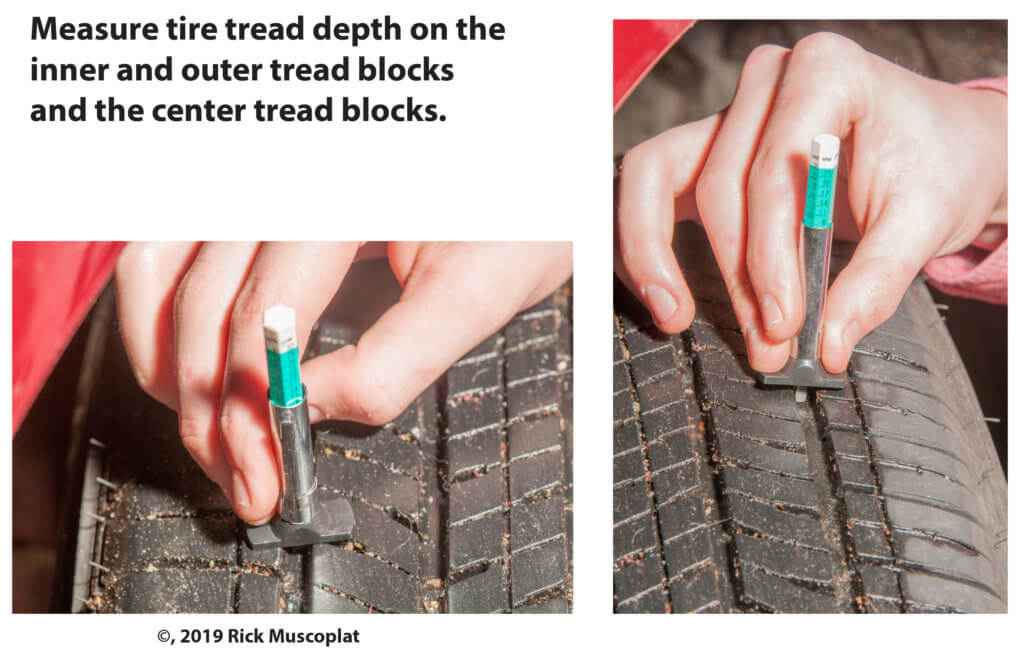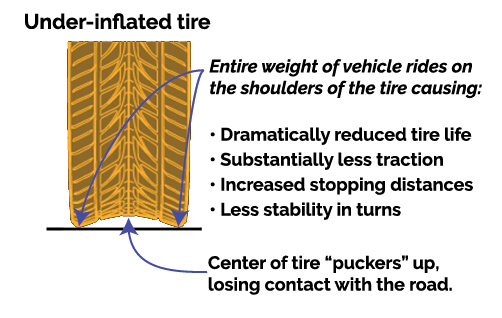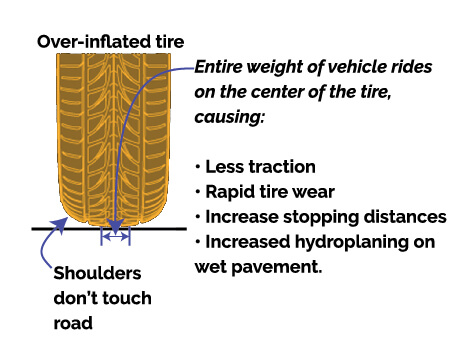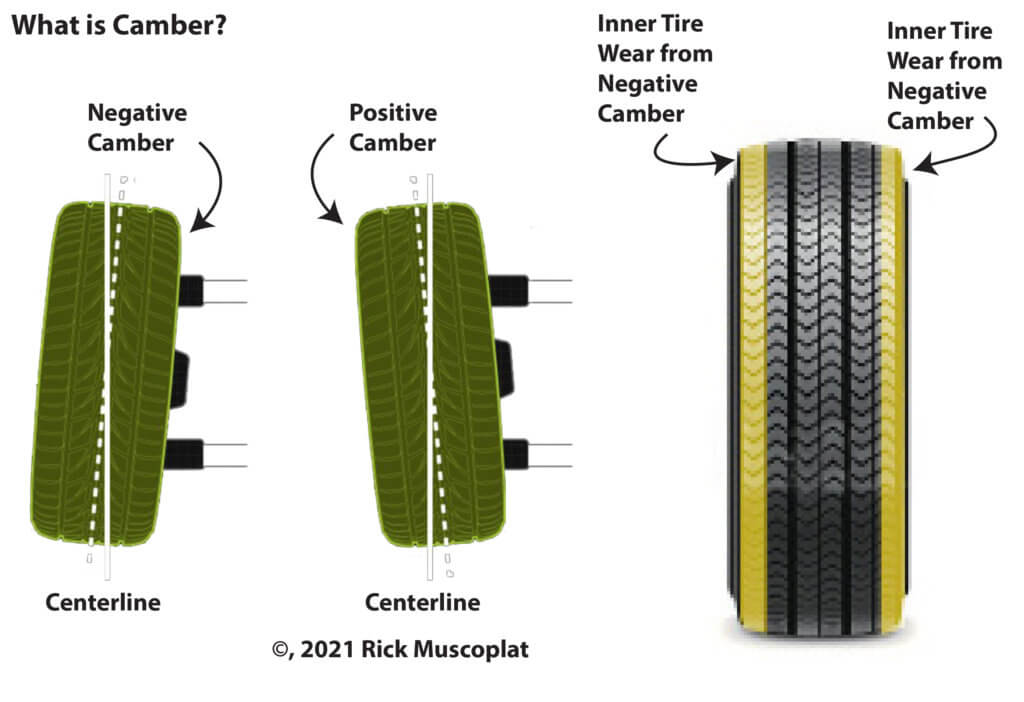How to Measure Tread Depth and When to Replace Your Tires
Learn the correct way to measure tire tread depth
Using a penny to measure tread depth is a fool’s way to monitor tire wear. It only tells you when your tires must be replaced. But it can’t tell you how your tires are wearing or if there’s a problem. The best way to monitor your tires is to measure tread depth with an inexpensive tread depth gauge. I’ll show you how to do that and what the numbers mean.
What is tread depth?
Tread depth is the height of the tread blocks from the area that contacts the road to the base of the tread block where it meets the tire cap. New tires typically have a tread depth of 10/32” to 12/32”. If the tires are rotated according to the carmaker or tire manufacture’s schedule and the vehicle alignment is maintained, the tread blocks will wear evenly across the tire until they’re worn to the legal minimum of 2/32,” at which point they must be replaced.
However, the legal minimum is different than the safe minimum. Actual track testing proves that tires lose a substantial amount of traction once the tread blocks wear down to 4/32″.
How to measure tire tread depth
Purchase a tread depth gauge
Start by checking the tread depth on the outermost tread blocks. Record the measurement. Then check the tire tread depth in the center tread blocks, followed by the innermost tire tread blocks.

What the readings mean
Tread is worn more in inner and outer tread blocks
The tire is under-inflated. The weight of the vehicle  is riding on the shoulders of the tires and the center is puckered up. So you’re wearing off the tread blocks on the shoulders of the tires.
is riding on the shoulders of the tires and the center is puckered up. So you’re wearing off the tread blocks on the shoulders of the tires.
Tread is worn more in the center tread blocks than the inner or outer tread blocks
Tire is over-inflated. The weight of the vehicle is riding on the center  of the tires and wearing out only the center tread blocks.
of the tires and wearing out only the center tread blocks.
Tread is worn more on the inner tread blocks
The vehicle is out of alignment. The tire is tilted in towards the engine and more weight is being transferred to the innermost edge of the tire. The is usually fixed by adjusting CAMBER
Tread is worn more on the outer tread blocks
The vehicle is out of alignment. This can be caused by either camber or toe or a combination of both.

The Camber alignment angle refers to the inward or outward angle of the tire when viewed from the front of the vehicle. Too much inward (negative) camber will cause accelerated wear on the inside shoulder area of the tire. Too much outward (positive) camber will cause accelerated wear on the outside shoulder of the tire. Improper camber is often caused by worn wheel bearings, worn ball joints, worn strut mounts, bent control arm or worn control bushings.
What affects tread wear?
Lack of maintenance is the #1 factor in abnormal tread wear. Running the tire at less than the recommended pressure causes rapid wear on the outer tread while sparing the center tread. Overinflation, on the other hand, causes rapid wear on the center tread, while sparing the tread on the inner and outer edges.
Misalignment (tow or camber) can cause accelerated tread wear on the inner or outer edge of the tire.
Worn shocks or struts cause “cupping” (divots) in the tread as the tire bounces too much after hitting an obstacle or pothole and then hits the pavement, causing a gouge in the rubber.
Out of balance causes uneven tread wear.
Tread and traction
The greater the tread depth, the more traction the tire can create with the road. In wet deep tread, sipes and the voids between the tread blocks act to squeegee water off the road and move it to the sides of the tires. In snow conditions, the voids and sipes capture, compress and eject snow from the road surface, proving traction.
Studies have shown that once tread wears down to 4/32”, traction decreases dramatically from that point to 2/32”. In effect, the useful life of a tire is really only 6/32” to 8/32” of the original tread.
Tread patterns
Tire manufacturers constantly improve tread patterns to achieve maximum traction with minimal noise. Generally speaking, the more expensive the tire, the newer the tread design. In other words, as new tread patterns are developed, the older tread patterns are used on the tire company’s economy tire models.
Tread compounds
Tire companies constantly work to improve tread compounds to improve traction and increase tread life. Manufacturers add supplemental materials like silica to provide more traction while also providing more flex and less rolling resistance.
Tire Inflation
The recommended inflation pressure for a vehicle is listed on a decal in the driver’s door area. The recommended tire pressure is based on a number of factors like the weight of the vehicle, the maximum payload rating, and passenger comfort. The recommended pressure for most passenger vehicles is 30 to 36-psi.
The MAXIMUM pressure listed on the tire is NOT the recommended pressure. It is exactly as it says it is; the MAXIMUM pressure that the tire can be inflated to, regardless of the load.
Tread is referred to as TREAD, not thread. Thread is used for sewing, not tires.
©, 2021 Rick Muscoplat
Posted on by Rick Muscoplat
